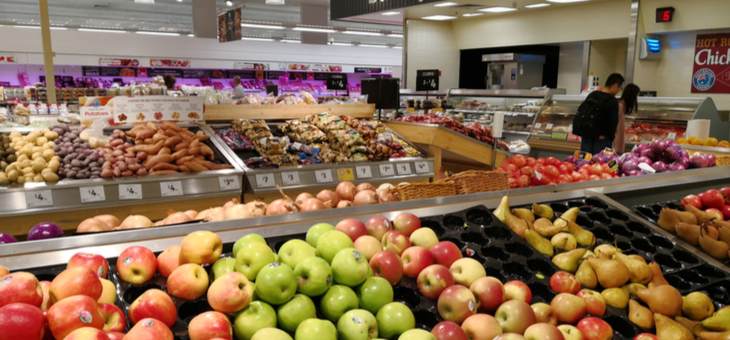Spending at grocery stores and supermarkets across Australia increased by 17 per cent in the 12 months to February 2021, according to credit card data from Commonwealth Bank. And yes, much of that could be attributed to panic buying before we became familiar with COVID lockdowns.
Similar data from Suncorp found that in the 12 months to October 2020, spending on dining out fell by a massive 50 per cent, from $54 per week on average to just $27.
That means it’s even more important than ever that we’re aware of the tactics supermarkets use to keep us spending.
Obviously, don’t go shopping when you’re hungry or you’ll end up with more purchases than you really wanted. And have you ever wondered why there aren’t any product-find screens to allow you to locate the items you don’t buy regularly, such as couscous or mint jelly? I’m guessing, but surely it’s because they want you to wander up and down aisles and probably buy extra products.
Read: Supermarkets named and shamed as junk food pushers
But, of course, there is a bible of heavily researched marketing tactics to ensure we spend as much money as possible whenever we enter the supermarket doors. Here are the main ones.
Positioning
Stores are designed so that brands ‘control’ customers’ shopping experiences. Those in charge of organising the layout of supermarkets are encouraged to steer people in a counter-clockwise direction as research has shown objects to a shopper’s left catch their attention more than those to the right.
Higher-priced items are often placed at eye level and the cheaper brands are positioned lower where they’re harder to see to encourage customers to spend more.
Fruit and vegies
Do a mental check and you’ll no doubt find that visually attractive items, such as seasonal fruits and vegies are to the right of the supermarket entrance to pull shoppers in that direction.
Milk, eggs and bread
The essentials, such as milk, bread and eggs, are all some distance from each other. Inconvenient and annoying but again part of the strategy to get you moving around the supermarket as much as possible – and, of course, buy items you weren’t intending to buy.
Meat counter
Research reveals that the background of the meat counter is usually a primary colour so that the fresh meat stands out more. And you might want to check whether the lighting gives the meat a rosier glow than is normal.
Sale signs
Promotional signs are usually put between discount items and items that aren’t on sale as it makes people associate the full-priced products with the discounted ones.
Aisle ends
The ends of the aisle are ‘prime real estate’ and big brands apparently play big sums to have their products placed there.
Checkout areas
Empty spaces in this area are kept to a minimum. The strategy is to make it difficult for customers to get rid of unwanted items at the last minute.
Appealing to the senses
Supermarket designers prefer limited natural light, few, if any, windows, and no clocks.
Rewards programs and points
Rewards schemes such as Flybuys (Coles) or Everyday Rewards (Woolworths) are linked to major airlines, and shoppers can exchange their points for flights, hotels, upgrades and more. While that might sound good, these schemes don’t necessarily represent good value for money.
Read: Secret supermarket code solves food country of origin mystery
Analysis by Point Hacks in 2020 found that “after a year’s worth of shopping exclusively at one supermarket, neither amount of points is enough to buy the cheapest economy flight between two Australian cities with either Virgin Australia or with Qantas”, assuming an annual family spend of $12,000.
The schemes do have frequent ‘bonus offers’, such as 10,000 free points if you spend a certain amount in a certain time. These can be worth using, but be wary of increasing your spending just to earn as many points as possible.
Big shopping trolleys
In some major shopping chains, you’ll often have a choice between various trolley sizes: handheld, small and big.
This might seem inconsequential, and you might just grab the first one you see, but there’s plenty of research that suggests using a bigger cart leads to a bigger shop.
Read: Cheapest supermarket for big brands
Compare the Market spokesperson Simon Downes says: “While it might not look like it, almost everything in the local grocery store has been carefully designed and planned out to get shoppers to spend as much as possible in any given visit, and they’ve perfected some of these tactics so well that roughly 20 per cent of purchases are unplanned.”
You’ve been warned!
Are you aware of supermarkets’ strategies to encourage you to buy more? Are there other ploys you have noticed? Share your thoughts in the comments section below.

